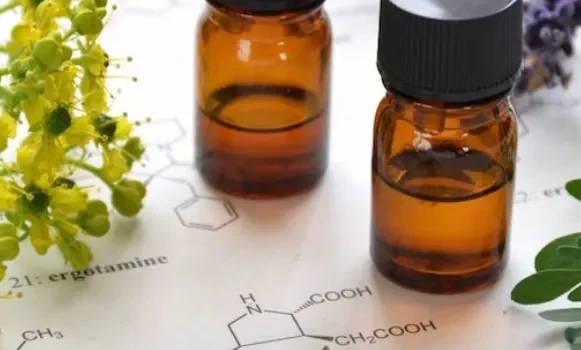
If you’re new to the world of essential oils and want to explore their benefits for health and wellness, you’re not alone! Many people are curious about how to use these natural oils effectively. I remember feeling just as unsure about how to incorporate essential oils into my routine. I was intrigued by the potential of tea tree oil for its numerous benefits and loved the soothing scent of lavender, but I had no idea how to properly use them. Should I apply them directly to my skin? How much should I use? Do I need any special equipment?
If you’ve found yourself asking these questions, this post is here to guide you. You’ll learn the three main ways to use essential oils and tips for safe and effective use.
Three Main Ways to Use Essential Oils
Essential oils can be used in three main ways: aromatically (through inhalation), topically (on the skin), and internally (by ingestion). It’s crucial to understand each method, especially when it comes to internal use, as it requires specific guidelines to ensure safety.
1. Aromatic Use (Inhalation)
Inhaling essential oils is one of the simplest and most effective ways to experience their benefits. When you breathe in the tiny molecules of the oil, they travel to the limbic system in your brain, which helps regulate your mood, emotions, and even physical reactions. For example, you might use oils to feel more energized, calm your nerves, or support your immune system.
Some ways to use essential oils aromatically include:
- Smelling directly from an open bottle
- Using a diffuser to disperse the scent throughout the room
- Rubbing a drop between your hands and inhaling
- Wearing a diffuser bracelet for on-the-go use
How to Use a Diffuser
There are various types of diffusers, but ultrasonic diffusers are perfect for beginners. They work by adding water and a few drops of essential oils to the tank, and then the diffuser emits a mist of oil-infused air. They are easy to use and provide a safe alternative to candles. I personally like having different diffusers in various rooms to match the décor. For travel, there are portable diffusers that even fit in a car’s cup holder.
2. Topical Use (On the Skin)
Applying essential oils directly to the skin allows them to absorb quickly and target specific areas. For example, peppermint oil can help alleviate tension in your neck, while Deep Blue oil is excellent for sore muscles. You can apply oils to areas like your wrists, neck, back, or the bottoms of your feet. To use essential oils topically, always dilute them with a carrier oil to protect your skin and enhance absorption. Carrier oils like fractionated coconut oil, almond oil, or jojoba oil are popular choices.
Creating Roller Bottles
Roller bottles are one of the most convenient ways to apply oils topically. Simply add essential oils and carrier oil to a roller bottle, and you can carry it with you to apply whenever needed. For instance, you can make your own blend to relieve headaches, ease muscle tension, or even use as a calming perfume. I always keep a small case of roller bottles with me, filled with oils like peppermint for headaches, lavender for relaxation, and citrus oils as natural perfumes.
3. Internal Use (Ingestion)
While internal use of essential oils can offer powerful health benefits, it’s important to proceed with caution. Not all essential oils are safe to ingest, so make sure you only consume oils that are specifically labeled for internal use. If you are using a brand like doTERRA, the oils will be labeled with supplement facts, showing which ones are safe for ingestion.
How to Safely Use Essential Oils Internally
- Add one drop of essential oil to a glass of water (always use glass, not plastic) and mix well. For better absorption, you can add a drop of liquid stevia.
- For “hot” oils like oregano or clove, avoid adding them to water, as they can irritate your mouth and throat.
- You can also add essential oils to food by adding one drop to a dish like pasta sauce, salad dressing, or smoothies. For a milder taste, dip a toothpick into the oil and swirl it into your food.
- Another method is to place 1-3 drops into an empty veggie capsule, then top it off with olive oil.
Safety Tips for Essential Oils
While essential oils are natural, they are still highly concentrated and should be used carefully. Always start with a small amount and avoid applying oils directly to sensitive areas like your eyes or ears. If you experience irritation, dilute the oil further or discontinue use.
- For sensitive skin, dilute oils with a carrier oil (like fractionated coconut oil) to reduce the chance of irritation.
- Never apply undiluted essential oils directly to the skin, especially “hot” oils such as oregano, cinnamon, or clove.
- If you accidentally get essential oil in your eyes, rinse it with a carrier oil—not water, as it will only spread the oil.
Final Thoughts on Using Essential Oils
Essential oils are a powerful, natural tool for promoting wellness, but it’s important to use them safely and effectively. Whether you’re inhaling the soothing scent of lavender, applying peppermint for headaches, or enjoying the benefits of ginger in your tea, essential oils can enhance your life in many ways. Always start with small amounts and make sure to follow safety guidelines, especially when ingesting oils.
If you’re just starting out with essential oils, experiment with different oils and methods to find what works best for you. Whether it’s through a diffuser, roller bottles, or internal use, you can easily incorporate essential oils into your daily routine to enhance your overall well-being.












